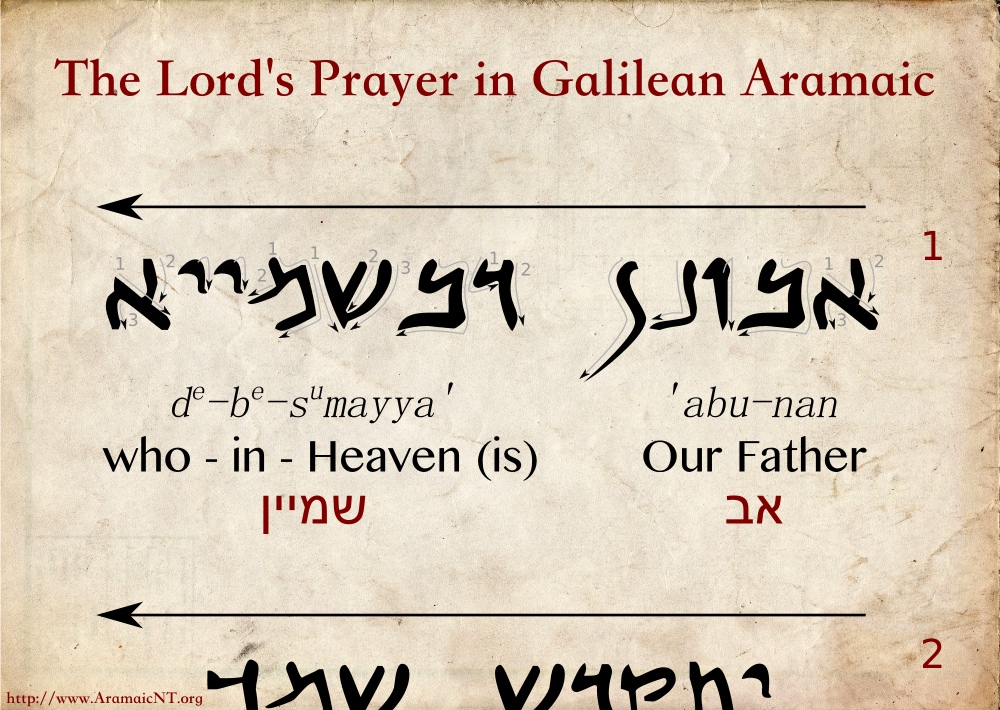The Lord’s Prayer in Galilean Aramaic
The Lord’s Prayer is with little debate the most significant prayer in Christianity.
Although many theological and ideological differences may divide Christians across the world, it is a prayer that unites the faith as a whole.
Within the New Testament tradition, the Prayer appears in two places. The first and more elaborate version is found in Matthew 6:9-13 where a simpler form is found in Luke 11:2-4, and the two of them share a significant amount of overlap.
The prayer’s absence from the Gospel of Mark, taken together with its presence in both Luke and Matthew, has brought some modern scholars to conclude that it is a tradition from the hypothetical Q source which both Luke and Matthew relied upon in many places throughout their individual writings. Given the similarities, this may be further evidence that what we call “Q” ultimately traces back to an Aramaic source.
Looking at the underlying Greek text of both sources, and working from what is generally accepted as the earliest form of the prayer, the following unfolds in translation back into Galilean Aramaic:
Abba, [1]
Father,
Yithqadash sh‘mak.
May thy name be holy.Tethe malkuthak.
May thy kingdom come.Teh’wey ra’uthak.
May thy will be done.Pitthan d-çorak [2] hav lan yomden.
Give us today our usual bread.w-Shbuq lan hobenan. [3]
And forgive us our debts / sins.Hek ‘anan sh‘baqin l-haibenan.
As we forgive our debtors.w-La ‘ul lan l-nisyon.
And lead us not into temptation.Amen.
Keep in mind that this rendition is a work in progress and will continue to be refined (as any effort in reconstruction should be).

